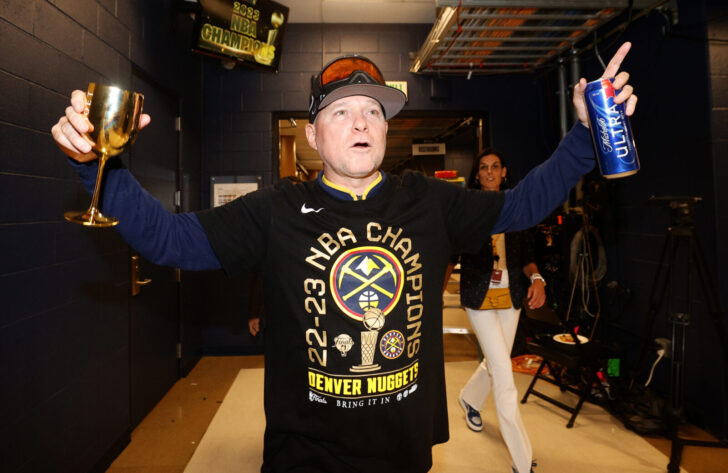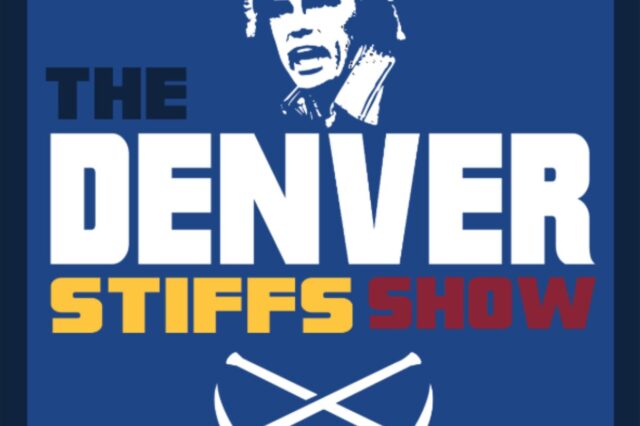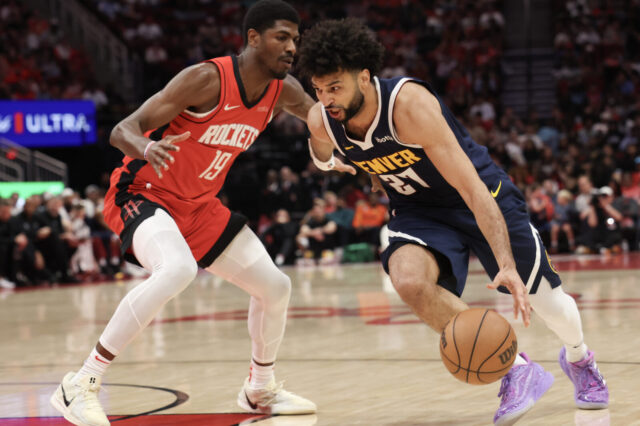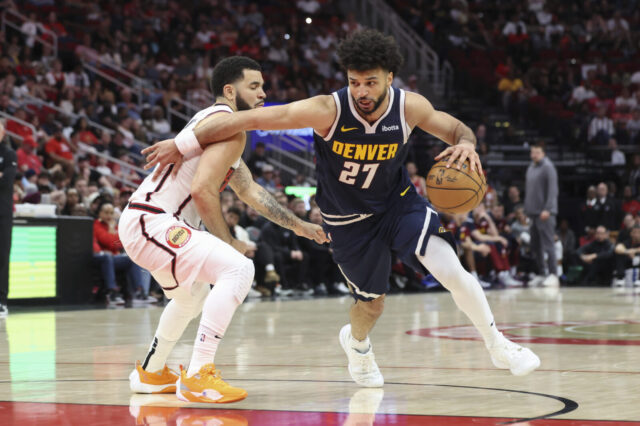The Denver Nuggets gave head coach Michael Malone an extension this week that, according to Adrian Wojnarowski, will make him one of the highest paid head coaches in the NBA. It comes after eight seasons with the Denver Nuggets and on the heels of guiding the franchise to unchartered territory with their first ever NBA title this past Summer. It’s an extension that truly is a decade in the making. For coach Malone it rewards him for all he has accomplished here. It is also an acknowledgement of how the Nuggets made a shift in their philosophy with personnel both on and off the court.
When Tim Connelly took over the reins for the Nuggets in the Summer of 2013 the organization was making a transition. Masai Ujiri left after winning executive of the year, George Karl was fired after winning coach of the year, the team’s star player, Danilo Gallinari, suffered a major injury at the end of the last season, their other star, Andre Iguodala, left in a way that left a bad taste in everyone’s mouth. To be frank, it did not go well for Tim that first Summer as a number of mistakes were made. He hired Brian Shaw to be coach and, with the organization believing they were still in a competitive window, he brought on an infamous free agent class of Randy Foye, J.J. Hickson and Nate Robinson. Finally, he traded the Nuggets first round pick to the Utah Jazz for a second rounder and cash, the Jazz selected Rudy Gobert with the pick. There may not be a more damaging summer in franchise history than that one.
It all blew up almost immediately. Gallinari tried using an alternate healing method for his knee injury which just resulted in delaying the full-out ACL surgery he ended up getting, making the 2013-2014 season a complete lost year for him. Robinson didn’t last the season, he too went down with an ACL injury in January. In the few months he was on the court he managed to rack up $35k in fines. $10k from an altercation with then Oklahoma City Thunder rookie Steven Adams and $25k for saying the referees hate him. Foye and Hickson were less of distractions, but J.J. also went down with an ACL tear later in the season. On the court, Shaw’s philosophy wasn’t paying dividends. He wanted to make Denver into a methodical, half-court team that played a lot in the post and Denver simply didn’t have the personnel for it, plus it weakened one of the Nuggets best advantages which was playing at altitude.
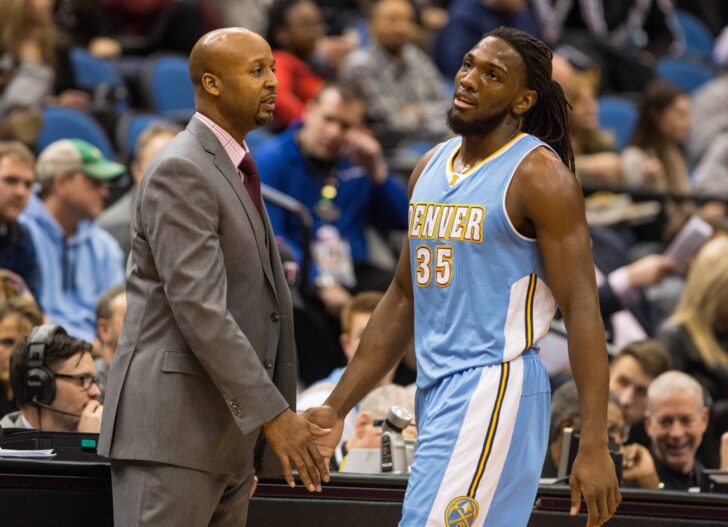
Jan 5, 2015; Minneapolis, MN, USA; Denver Nuggets forward Kenneth Faried (35) and head coach Brian Shaw against the Minnesota Timberwolves at Target Center. The Nuggets defeated the Timberwolves 110-101. Mandatory Credit: Brace Hemmelgarn-USA TODAY Sports
Ultimately, Denver finished the 13/14 season with a record of 36-46, ten games under their initial season win line. The next season the win total dipped to thirty. Shaw couldn’t relate to his players at all. He confiscated their phones during practice, tried rapping pregame scouting reports and even started reading books on how to relate with millenials. He also publicly feuded with one of the non-millenials on his team, Andre Miller, resulting in ‘Dre leaving the team until a trade could be worked out. Ty Lawson spiraled off the court, culminating with him missing practice because he couldn’t get back from Las Vegas on-time after the All Star break. The Nuggets officially hit rock bottom at the end of February with six weeks left before the end of the season. In the middle of an eighteen point blowout loss the Nuggets broke the huddle with a “1, 2, 3…six weeks!” chant. Shaw was fired three days later. Melvin Hunt took on the role of interim coach, Denver won by eleven on his first night as the top guy on the bench and won nine more games after that. That Summer the search for a coach who could right the ship was on.
The process was extensive and done quietly. The Nuggets were adamant that they didn’t want to have their coaching search play out through the media. Eventually, by June there were five names floating around. Some names were familiar like Hunt and Mike Woodson. The biggest name was Mike D’Antoni and there were two less heralded names: Don Newman from the Washington Wizards and former Sacramento Kings head coach Michael Malone. Eventually the Nuggets whittled it down to Hunt, Malone and what appeared to be the top candidate in the fans eyes, D’Antoni. To the chagrin of those fans and perhaps to the surprise of many in NBA circles, Malone was the choice.
At his introductory press conference Malone was peppered with questions about whether the Nuggets would get back to running, to playing with pace. He didn’t shy away from that but he also said he wanted there to be efficiency with it, that the team had to create pace by creating stops on defense and getting out in transition. In many ways he was echoing what Karl had preached during his years. The question remained though as to whether or not he would get different results than Karl whose teams often came up lacking on the defensive end and fizzled out early in the playoffs. The other thing that was hammered home during the press conference: culture. Connelly remarked that is was a major reason for choosing Malone to coach the team and Michael spent the whole Summer telling everyone that it was a clean slate. Regardless of what had happened before, moving forward everyone had their chance to make their own impression with him and help develop a new culture.
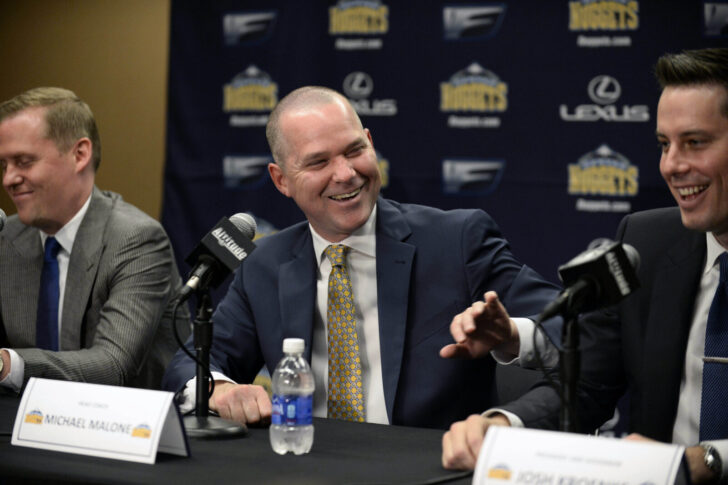
Jun 16, 2015; Denver, CO, USA; Denver Nuggets head coach Michael Malone (center), general manager GM Tim Connelly (left) and president Josh Kroenke (right) react to a media question during a press conference at the Pepsi Center. Mandatory Credit: Ron Chenoy-USA TODAY Sports
Some guys didn’t truly get that chance. Lawson had an infamous hookah smoking video during the draft and was traded that Summer before every playing a single game for Malone. Other veteran holdovers, even those from the Karl era, had to come to terms with a team that was embracing a rebuild and that was a tough pill to swallow. To Connelly’s credit, he realized the mistakes he made as an early GM and focused on scouting, drafting and acquiring players who not only fit Malone’s system but also fit the culture of accountability, respect and family that the Nuggets were establishing. When players didn’t fit the mold, whether it was Wilson Chandler saying in the locker room that the Nuggets should have traded him or Kenneth Faried stating he’s a starter in the league after the Nuggets just signed Paul Millsap, who played the same position, Connelly moved on, sometimes paying the price of draft compensation to do so.
The organization as a whole also learned from their Karl/Shaw mistake as well. When Karl was fired he told Josh Kroenke that it was very stupid and maybe it was. Replacing a coach like Karl, who absolutely squeezed every bit of juice he could out of that 2012/2013 team, was not easy and finding the right coach took time which set Denver back when Connelly got it wrong the first time around. When Malone got to Denver success did not come early. They won just thirty-three games his first year. They featured a group of extremely young players, relying heavily on rookies Emmanuel Mudiay and (eventually) Nikola Jokic along with second year players Gary Harris and Jusuf Nurkic. The roster as a whole was a weird mix of guys trying to figure the league out paired with guys trying to get the most out of their prime. The culture was starting to grow though and Kroenke and Connelly showed patience with the minimal early returns.
They were rewarded. The next season Denver won forty games, the season after that they had a winning record of 46-36 and came within an overtime of making it back to the postseason. Losing that game 82 against the Minnesota Timberwolves in 2018 also was going to test the front office’s resolve. Now five years removed from the playoffs the fan base was growing restless and the calls for Malone’s job were getting loud and narratives were being written. Fans were convinced Malone was damaging the team by not giving more minutes to the likes of Faried, Juancho Hernangomez, Malik Beasley and Trey Lyles. Inside the building though the belief in Denver’s coach was steadfast and when Malone was asked about his job security after the 2018 season, Nuggets insider Chris Dempsey set the record straight.
Nothing had less substance this season than this narrative. Malone was never in trouble. There was never a single piece of real reporting that said he was & he presided over a team that won 46 games – 6 more than last season & 13 more than 2 yrs ago. I was shocked this was asked. https://t.co/Oy5Az2xDeK
— Chris Dempsey (@chrisadempsey) April 12, 2018
Denver’s belief in their coach at that moment turned out to be the right call. It’s easy from a fan perspective to miss the little things because a lot of them happen behind the scenes. Fans didn’t get to see the work Malone was doing developing Jokic, Jamal Murray and many others on his young squad as not just basketball players but as good teammates and men. They couldn’t see the relationships he was cultivating that today make his players have his back every single day. For the fans, marginal improvements in the overall record without playoff success wasn’t a good enough payoff. The front office’s patience won the day though. Malone silenced all the doubters (for the time being) that next season. He not only guided the Nuggets back to the playoffs, he did something that Denver hadn’t accomplished in a decade: won a playoff series.
That trend of success continued. The next season Malone guided the team to the Western Conference Finals and, with the roster construction job from Connelly, Arturas Karnisovas and Calvin Booth, the year after that had the team looking like championship contenders until Murray went down with his ACL injury. Once again the organization needed to lean on what were now staples: patience and culture. When Murray thought the Nuggets would trade him because he was “damaged goods” Malone and the whole front office stood by him. When the two subsequent playoff runs ended early with one win across two series where the Nuggets were eliminated, the opportunity to say Malone wasn’t the guy to get Denver over the final hump was there but nobody panicked. They stuck to what got them there. The following season it all paid off with Denver’s first championship.
With championships, with success, comes cost. The Nuggets have typically been cost averse. That manifested itself in different ways. They were one of the last teams to get a G-League franchise, their practice facility remains one of the most underwhelming in the league. Connelly in fact got the job in Denver to begin with because Ujiri was offered a lucrative deal to go do the same job in Toronto. Then, the Summer before they won it all, Connelly left when Denver was likewise unwilling to match the lucrative offer he was given by the Minnesota Timberwolves. Numerous assistant coaches have come and gone and there’s always been whispers that it’s partially due to Denver’s unwillingness to pay top dollar for their assistants. Ask anyone around the team though and they’ll tell you ownership always is willing to spend to get the team to the ultimate goal.
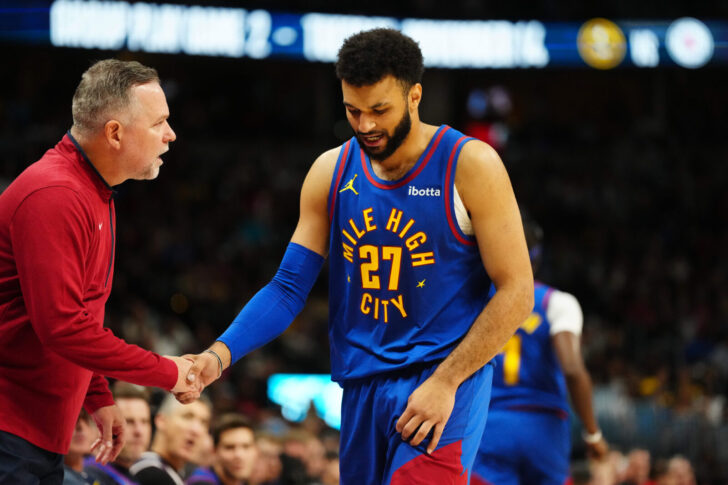
Nov 4, 2023; Denver, Colorado, USA; Denver Nuggets head coach Michael Malone checks on guard Jamal Murray (27) in the second quarter against the Chicago Bulls at Ball Arena. Mandatory Credit: Ron Chenoy-USA TODAY Sports
Sometimes those statements got met with an eye roll, what the Nuggets were saying and what they were doing weren’t aligning. Yet, there was evidence of the facts behind those statements. Now with a winner, Denver didn’t shy away from paying the guys on the court. To retain the talented roster they assembled the team dipped back into the luxury tax after spending over a decade avoiding it. Jokic, Murray, Aaron Gordon and Michael Porter Jr. make up one of the most expensive cores in the NBA. That’s somewhat the facts of life though, players produce and you have to pay them. Coaches aren’t quite the same story. The Nuggets could have done what they’ve done in the past, what they did with Karl. They could have played the wait and see game. Malone has two more years on his existing contract, the Nuggets could have waited until the final year of that deal to make an offer. They didn’t. They paid him for the results he achieved and made him one of the highest paid coaches in the league.
The process to get to the promise land was long. Almost a decade just under Malone, but the learning process on what it would take as an organization to get there was even longer. There were a number of times Denver could have not learned the lessons and fallen into yet another pitfall. They’ve instead achieved great results by investing in culture and continuity. Malone’s contract extension is a result of that philosophy and an indication that the Nuggets will continue to embrace the philosophy for years to come.
